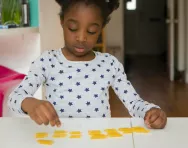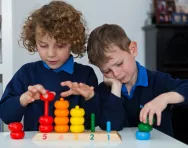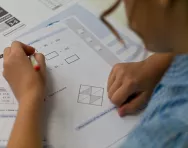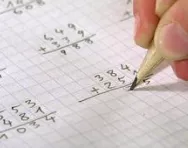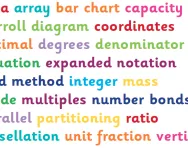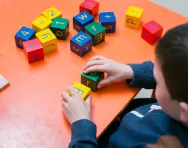TheSchoolRun.com closure date
As we informed you a few months ago, TheSchoolRun has had to make the difficult decision to close due to financial pressures and the company has now ceased trading. We had hoped to keep our content available through a partnership with another educational provider, but this provider has since withdrawn from the agreement.
As a result, we now have to permanently close TheSchoolRun.com. However, to give subscribers time to download any content they’d like to keep, we will keep the website open until 31st July 2025. After this date, the site will be taken down and there will be no further access to any resources. We strongly encourage you to download and save any resources you think you may want to use in the future.
In particular, we suggest downloading:
- Learning packs
- All the worksheets from the 11+ programme, if you are following this with your child
- Complete Learning Journey programmes (the packs below include all 40 worksheets for each programme)
You should already have received 16 primary school eBooks (worth £108.84) to download and keep. If you haven’t received these, please contact us at [email protected] before 31st July 2025, and we will send them to you.
We are very sorry that there is no way to continue offering access to resources and sincerely apologise for the inconvenience caused.
Dyscalculia explained
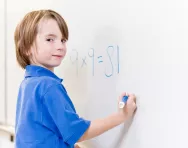
What is dyscalculia?
Dyscalculia is a condition that affects around 3-6% of the population.
“It is not simply an aversion to or dislike of mathematics, but describes someone at the extreme end of the spectrum, who has ‘severe’ difficulties with maths,” says Steve Chinn, dyscalculia expert, author and retired head of a specialist school.

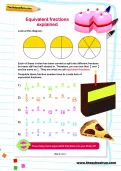
Start a unqiue learning programme!
- Weekly programme for each school year
- Worksheets sent direct to your inbox
- Keeps your child's learning on track
Dyscalculia has often been described as "dyslexia with numbers", but although people quite often have both, they are not variations of the same condition.
Dyscalculia refers to dysfunctions in a person’s ability to understand or work with quantitative information and the symbols used to communicate this information, predominantly numbers and arithmetic.
Because maths builds on previously learned information and a good foundational understanding of numbers, dyscalculia can affect children’s attainment in maths as they progress through school. For example, if they’re not confident with addition and subtraction, they might struggle with division and fractions.
Interestingly, Brian Butterworth, the UK's leading expert on dyscalculia, explains that a person with dyscalculia may be “a good mathematician but still hopeless with simple calculations”, explaining why the condition often goes undiagnosed.
Types of dyscalculia
Dyscalculia is a spectrum disorder, ranging from moderate to severe. A child with dyscalculia will most likely be performing below expectations in maths and have specific difficulties in certain areas, such as understanding number values or directions.
Many people with dyscalculia will struggle to master the rapid recall of basic facts, like times tables. This is likely to affect children’s attainment in the compulsory Year 4 times tables check, to be introduced in 2020.
This in turn affects their confidence, which can lead them to lose motivation for maths work and even give up altogether.
Teachers and parents often comment that a child “knew this last night, but has completely forgotten it this morning."
Symptoms of dyscalculia
- Difficulty counting backwards
- A poor sense of number and estimation
- Difficulty remembering basic maths facts
- Difficulty understanding place value
- Slow to perform calculations
- Often relies on addition as the default operation
- Weak mental arithmetic skills
- High levels of debilitating maths anxiety
- Difficulty using and understanding maths symbols
- Difficulty telling the time, particulary with an analogue clock
What contributes to dyscalculia?
There are a number of factors that contribute to a child developing dyscalculia. They occur at different levels of severity, and often interact with each other: for instance, anxiety tends to make working memory weaker.
Contributing factors include:
- Relying on counting strategies, like counting on fingers
- Poor sense of number
- Poor recognition and retrieval of sequences
- Poor recall of basic facts
- Poor long-term mathematical memory
- Problems with reversing a process or sequence (for example, understanding that 15 / 3 is the inverse operation for 5 x 3)
- Slow speed of processing and calculating
- Problems with word problems and problem-solving
- Poor short-term and working memory
- Inflexible thinking style
- Inability to generalise and see patterns in maths
- Poor knowledge of mathematical vocabulary and symbols
How to help a child with dyscalculia
Use a multi-sensory approach, using appropriate materials (such as counters or LEGO bricks) alongside the relevant numbers and symbols. The Asian Maths Mastery approach now used in many schools supports this.
Help your child see how mathematical facts and concepts interrelate – so if 5 + 5 = 10, they can work out that 5 + 6 = 11.
Break up maths tasks into stages, ensuring that they understand each step before they continue.
Use visual patterns to help your child make links, for example drawing two groups of five dots (also known as arrays) to help them work out 5 + 5 = 10.
Focus on helping your child master the maths facts that are easiest to retain, such as 1, 2, 5 and 10 times tables, and build on them.
Ensure your child frequently revisits and practises what they have learned.
Ask your child plenty of low-stress questions, like, “Is this answer going to be bigger or smaller than the last one?” and “How can I reverse this process?” so they can think about and explain mathematical processes in their own way.
Provide real examples of when mathematical processes might be used, as these will be more memorable – shops are a great mathematical playground.
Seek help from your child’s teacher. Ask to be put in touch with the school’s special educational needs coordinator (SENCO) for more support.
Give plenty of praise and positive feedback to your child – it will go a long way to giving them more confidence with maths.
Dyscalculia expert Steve Chinn has produced a series of videos with accompanying worksheets to help children and adults overcome maths difficulties, priced from £2.50 each. Go to Maths Explained for more information.
